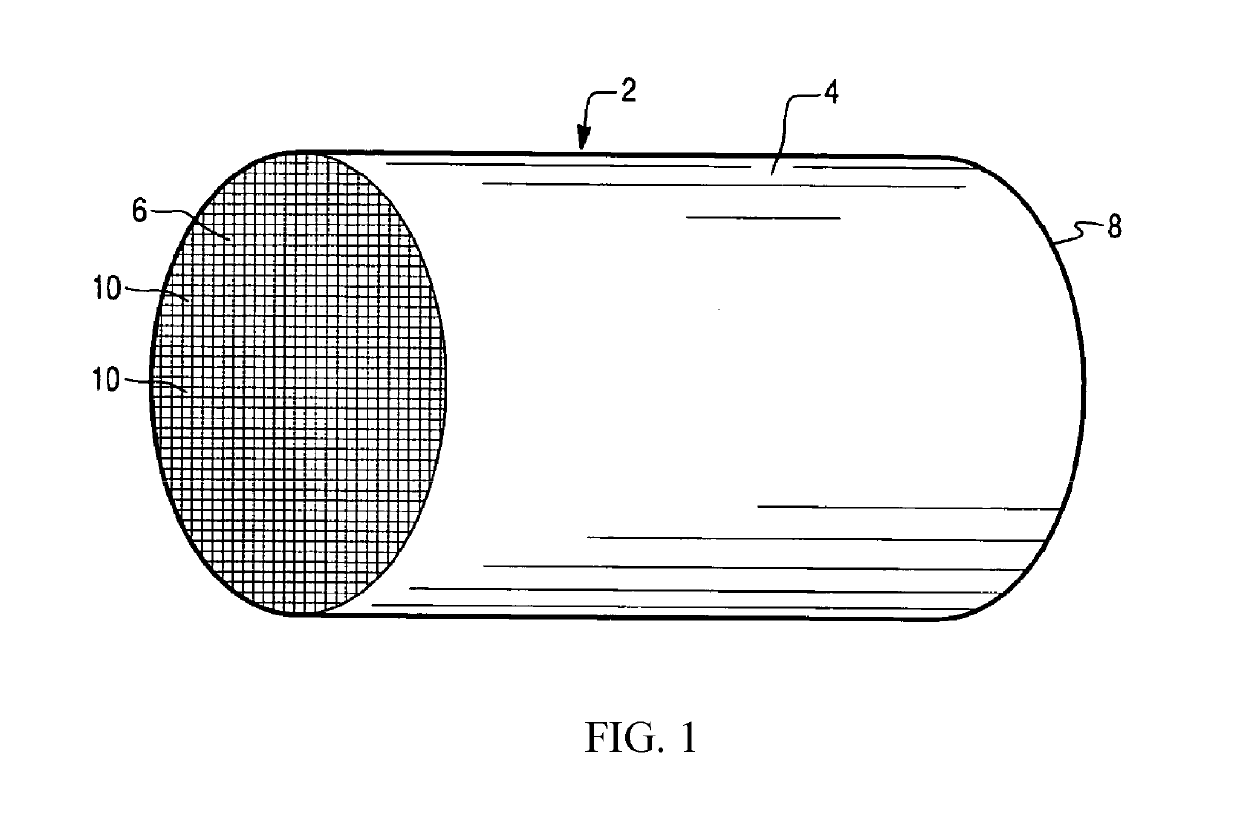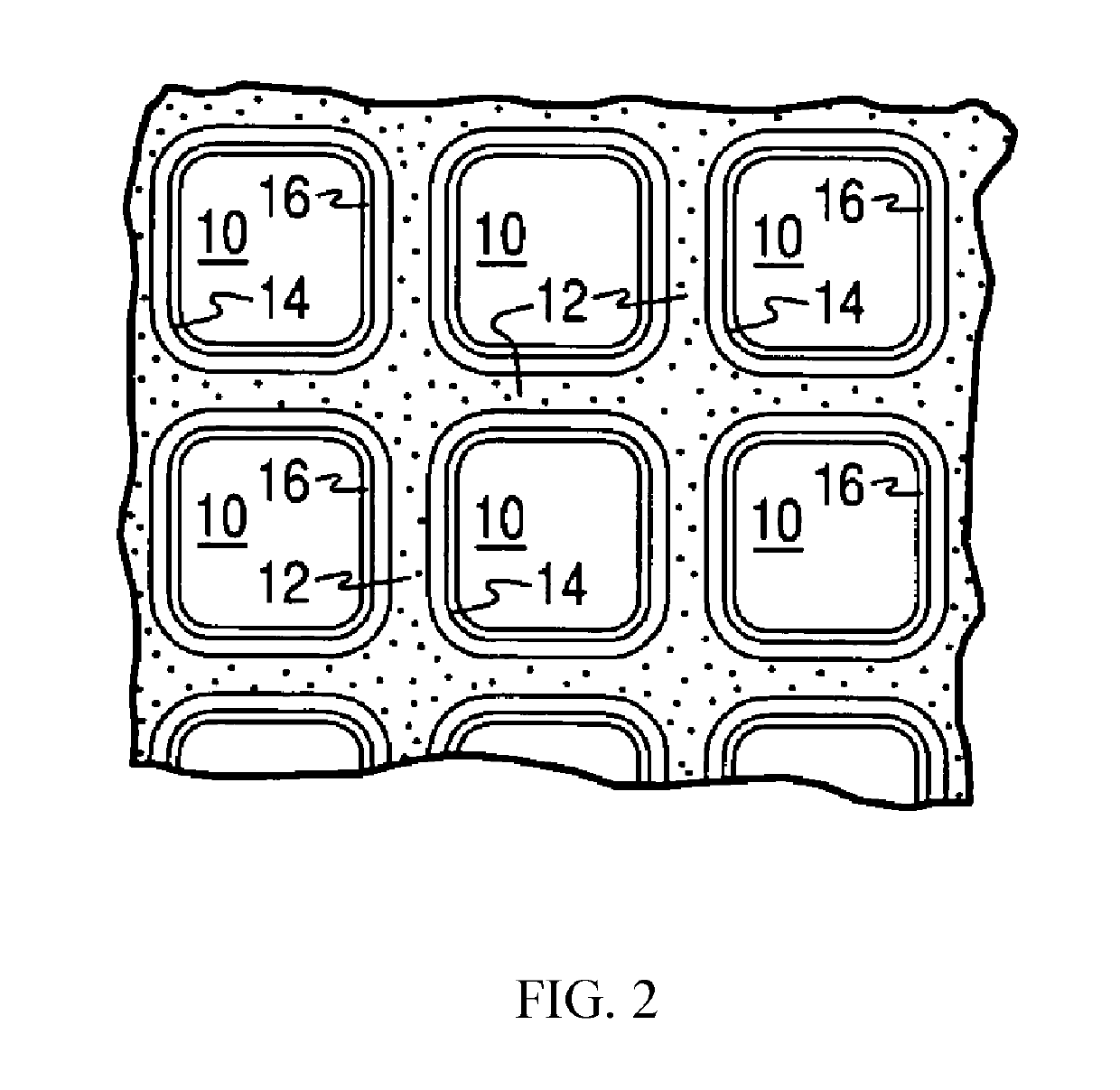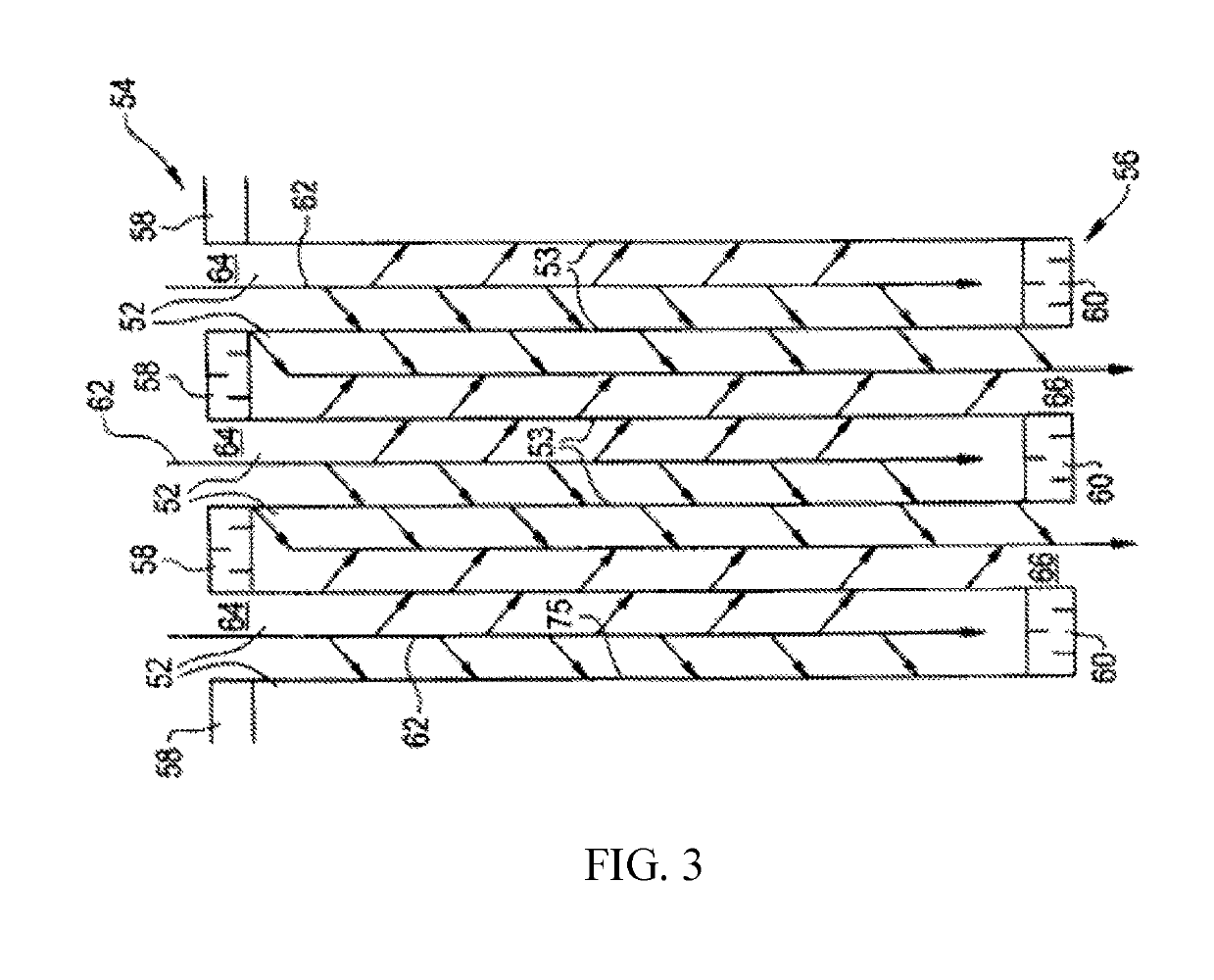Catalyst comprising bimetallic platinum group metal nanoparticles
- Summary
- Abstract
- Description
- Claims
- Application Information
AI Technical Summary
Benefits of technology
Problems solved by technology
Method used
Image
Examples
example 1
on of Pd—Rh Nanoparticles with an Average Particle Size of about 5 nm
[0109]26.30 g of poly(vinyl pyrrolidone) (PVP, MW=55,000), 14.97 g of ascorbic acid, and 1.25 g of KBr were added to 400 g water and preheated to a temperature T1 (T1=90° C. or 100° C.) in a jacketed glass reactor under mechanic stirring for 30 minutes to form an aqueous solution S1. Separately, an aqueous solution S2 containing 8.55 g of Na2PdCl4 (Pd-content=18.88 wt. %), 21.61 g of Rh(OAc)3 (Rh-content=4.98 wt. %) and 50 g water was prepared at a temperature T2 (T2=25° C.). Solution S2 was added into solution Si with a syringe pump at a rate of 250 mL / hour. Then, 50 g water was added with a syringe pump at a rate of 250 mL / hour. The reaction was heated to a temperature T3 and maintained at T3 for 20 hours (if T3=90° C.) or 3 hours (if T3=100° C.) to produce an aqueous colloidal suspension of Pd—Rh nanoparticles. The Pd—Rh nanoparticles were purified by dialysis. The suspension was placed into a Fisherbrand® regen...
example 2
on of Pd—Rh Nanoparticles Supported on Acid Dispersible Boehmite Alumina Powder
[0110]Acid dispersible boehmite alumina powder (Al2O3 content=80.7 wt. %) was dispersed in an aqueous colloidal solution containing Pd—Rh nanoparticles prepared according to Example 1 (Materials 1-A-1D from Table 1) under vigorous stirring. The resulting slurry was spray-dried using a Buchi Mini Spray-Drier B-290 (outlet temperature 120° C.). The spray-dried powder was calcined at 550° C. for two hours in air to provide Pd—Rh-nanoparticles supported on the boehmite alumina powder. Pd-content and Rh-content of the prepared PdRh / boehmite alumina powders are listed in Table 2.
TABLE 2Pd and Rh contents of the prepared PdRh / boehmite alumina powders.Example NumberPd-content [wt. %]Rh-content [wt. %]2-A0.420.272-B0.520.292-C0.620.372-D0.560.352-E (Mixture of 2-B, 2-C,)0.560.332-D
Example 3: Preparation of Pd—Rh Nanoparticles Supported on La-Stabilized γ-Al2O3
[0111]Aqueous suspensions containing Pd—Rh nanoparticl...
example 4
on of Comparative Sample A
[0113]The washcoat was prepared as follows to deliver the recited amounts on a dry gain basis. 2.55 g / in3 of a ceria-zirconia-oxide I (cerium oxide: 30 wt. %, zirconium oxide: 50 wt. %, lanthanum oxide: 5 wt. %; yttrium oxide: 5 wt. %) was impregnated by incipient wetness with a palladium nitrate solution to support 86 wt. % of the palladium for the entire washcoat. The impregnated powder was calcined in air at 550° C. for 2 hours. 0.85 g / in3 of a non-stabilized alumina oxide (100 wt. % Al2O3) was impregnated by incipient wetness with an aqueous solution containing a mixture of palladium nitrate and rhodium nitrate to support 14 wt. % of the palladium for the entire washcoat and 100 wt. % of the rhodium for the entire washcoat. The impregnated powder was calcined in air at 550° C. for 2 hours.
[0114]The calcined impregnated powder of Pd and Rh on alumina (PdRh / Al2O3) was dispersed in water and acetic acid at a pH in the range from 3.0 to 5.0. The slurry was ...
PUM
| Property | Measurement | Unit |
|---|---|---|
| Particle size | aaaaa | aaaaa |
| Fraction | aaaaa | aaaaa |
| Fraction | aaaaa | aaaaa |
Abstract
Description
Claims
Application Information
 Login to View More
Login to View More - R&D
- Intellectual Property
- Life Sciences
- Materials
- Tech Scout
- Unparalleled Data Quality
- Higher Quality Content
- 60% Fewer Hallucinations
Browse by: Latest US Patents, China's latest patents, Technical Efficacy Thesaurus, Application Domain, Technology Topic, Popular Technical Reports.
© 2025 PatSnap. All rights reserved.Legal|Privacy policy|Modern Slavery Act Transparency Statement|Sitemap|About US| Contact US: help@patsnap.com



